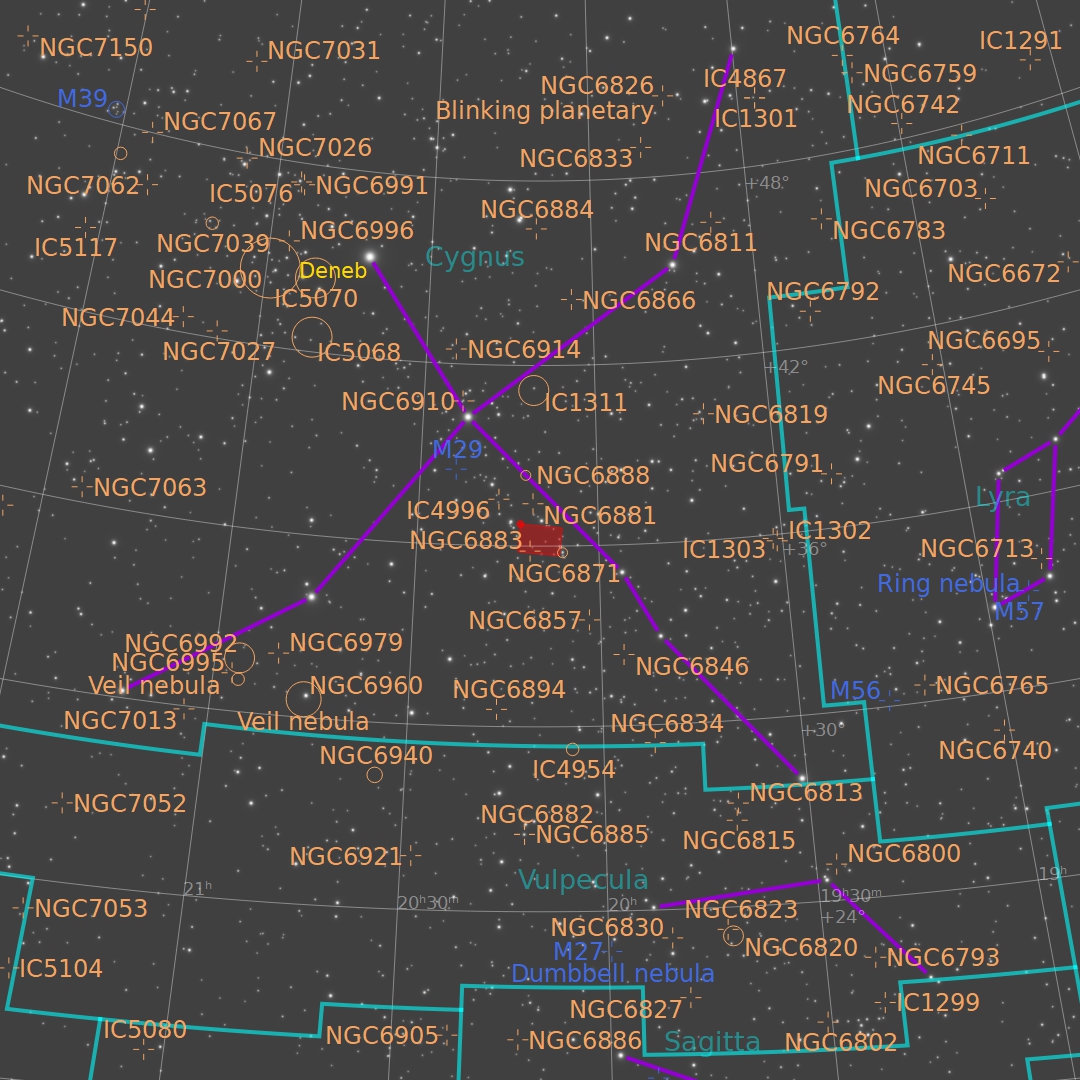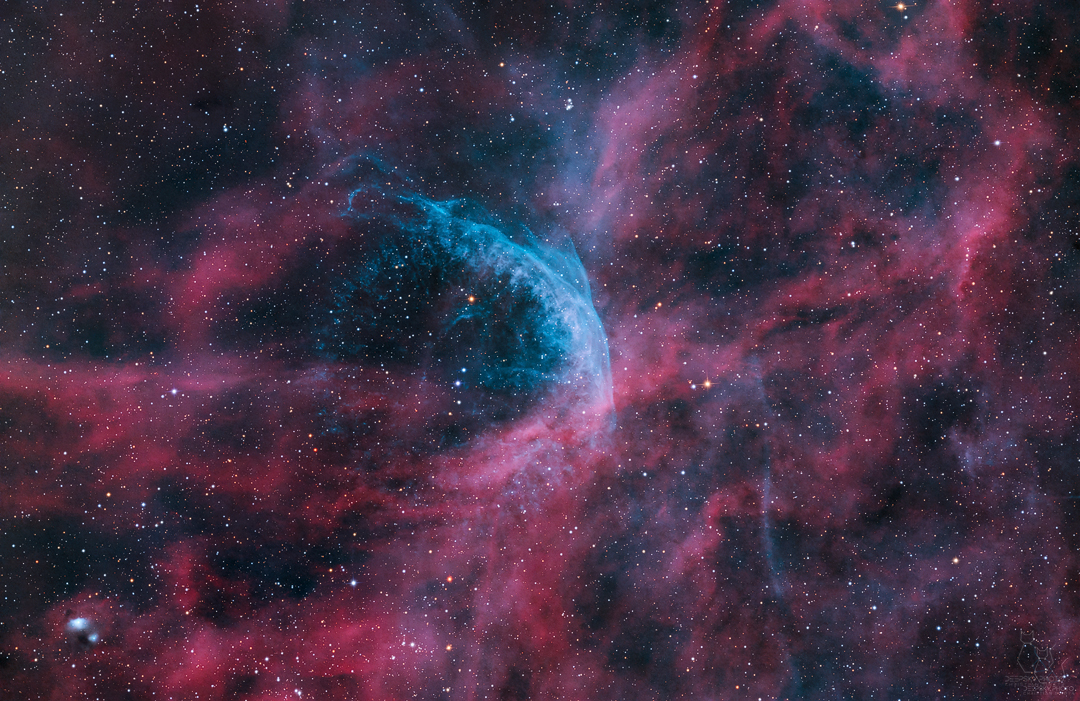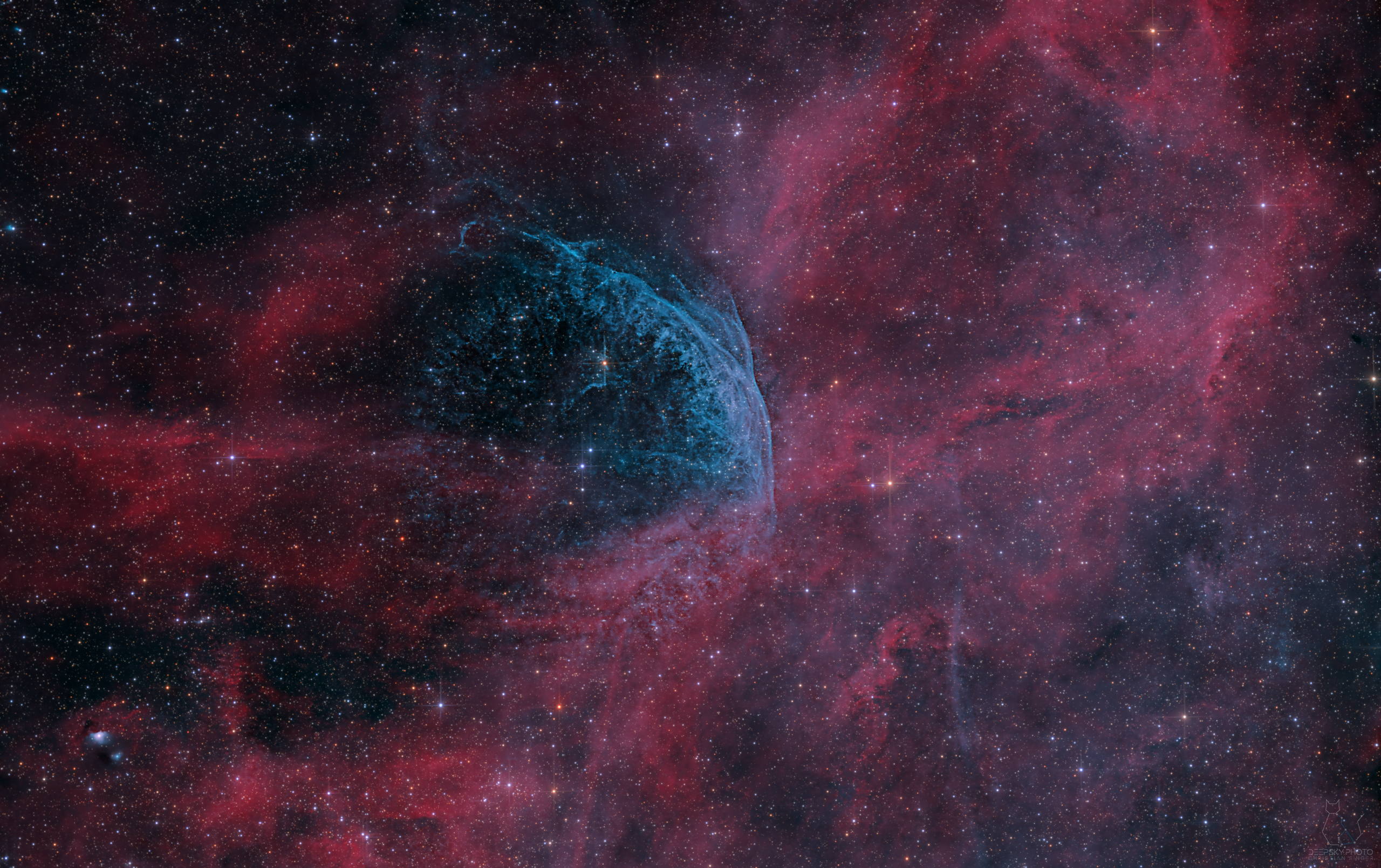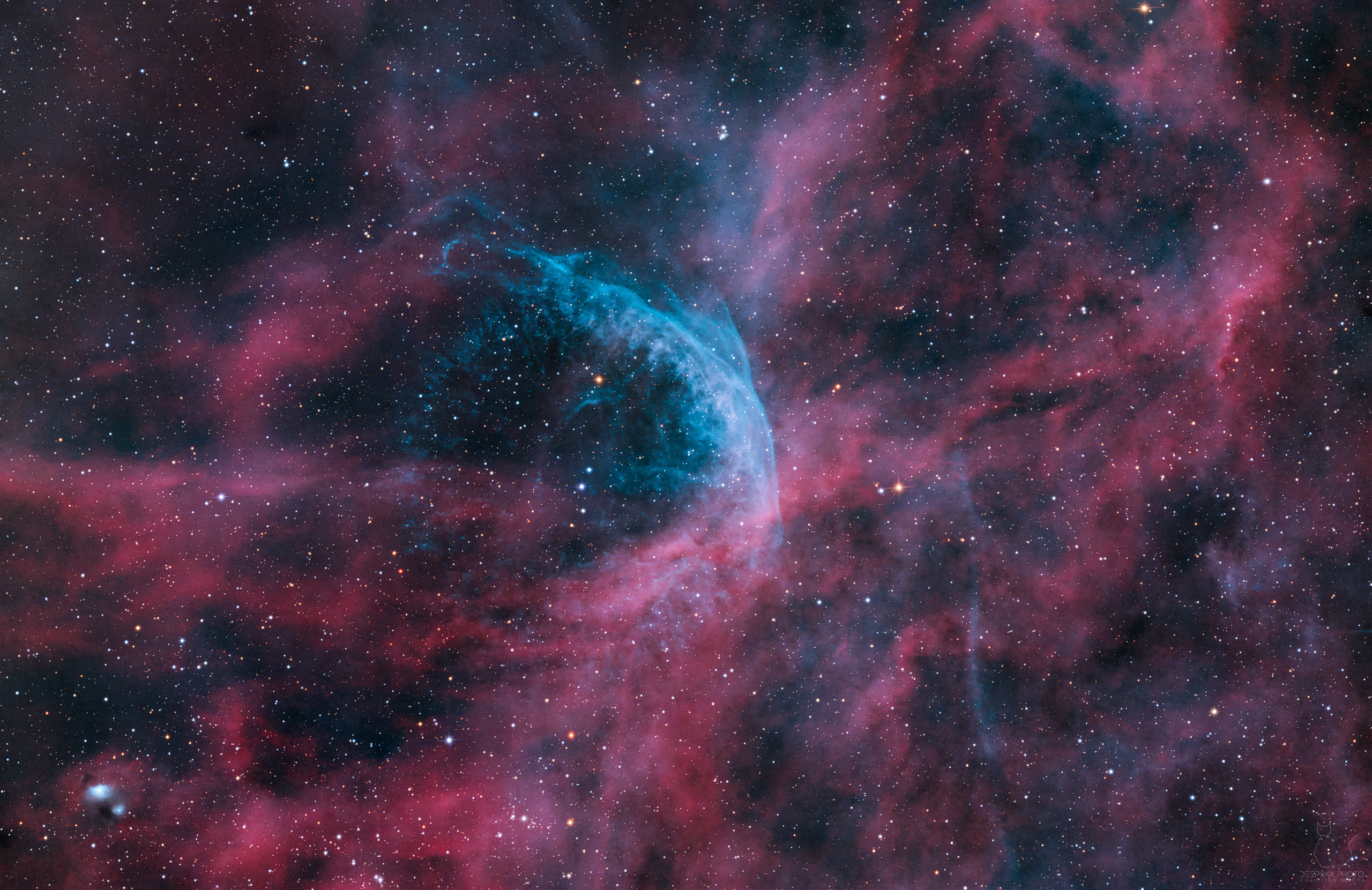Veränderlicher Wolf-Rayet-Stern im Sternbild "Cygnus"
Project #13
WR 134 (HD 191765) is a variable Wolf-Rayet star located around 6.000 light years away from Earth in the constellation of Cygnus, surrounded by a faint bubble nebula blown by the intense radiation and fast wind from the star. It is five times the radius of the sun, but due to a temperature over 63.000 K it is 400.000 times as luminous as the Sun.
WR 134 war einer von drei Sternen im Sternbild Cygnus, die 1867 beobachtet wurden und ungewöhnliche Spektren aufwiesen, die aus intensiven Emissionslinien und nicht aus den üblichen Kontinuums- und Absorptionslinien bestanden. Sie waren die ersten Mitglieder der Sternklasse, die nach Charles Wolf und Georges Rayet, die ihr ungewöhnliches Aussehen entdeckten, als Wolf-Rayet-Sterne (WR-Sterne) bezeichnet wurden. Er gehört zur Stickstoffsequenz der WR-Sterne, während die beiden anderen (WR 135 und WR 137) beide zur Kohlenstoffsequenz gehören und auch OB-Begleiter haben. (Quelle: Wikipedia)
WR134 – Projektveröffentlichungen
Bild-Veröffentlichungen
Nachfolgend sind alle projektbezogenen Details zu dieser Revision zu finden.
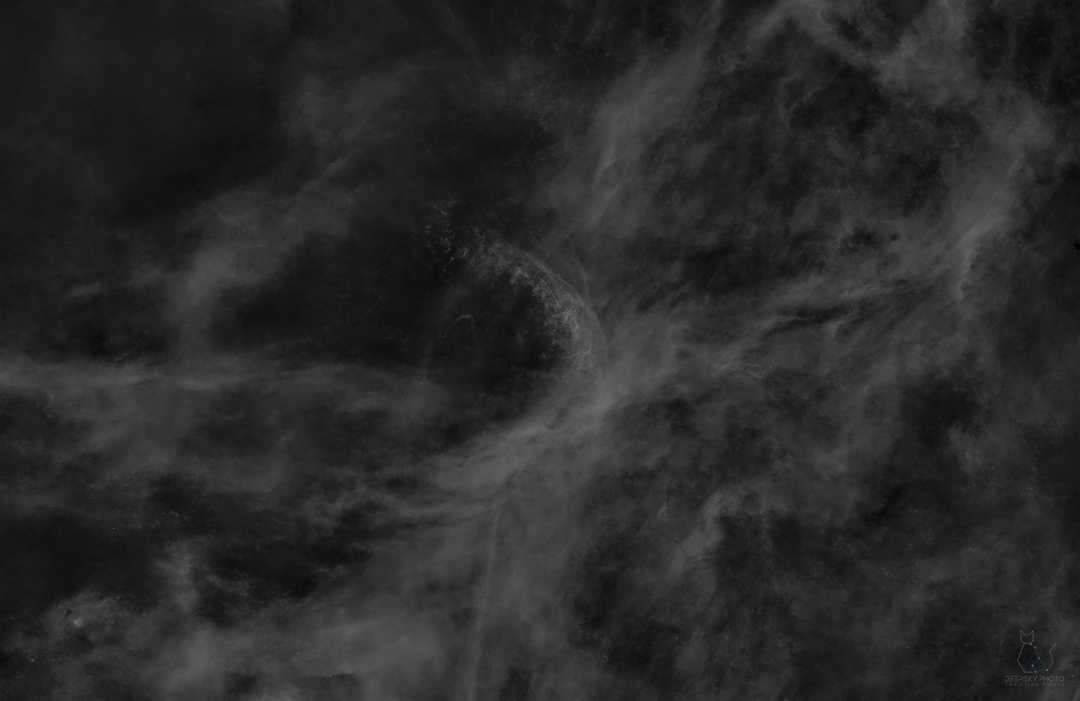
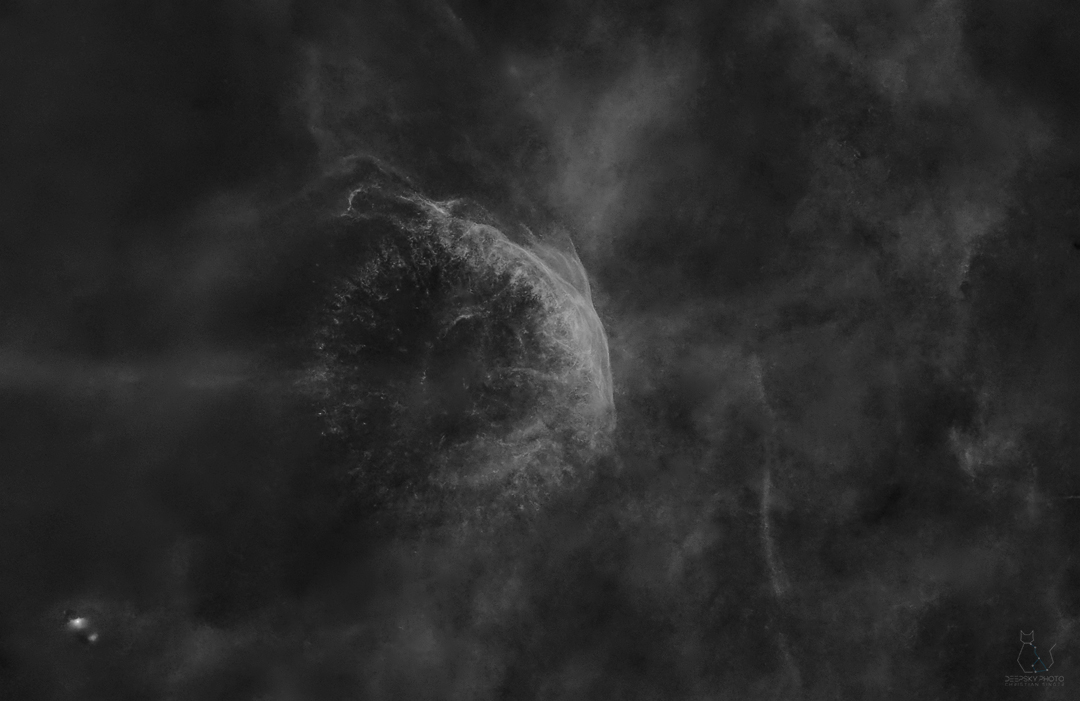
POST-Processing approach
Please take note, that – for this revision – I took the same data as I used for WR134 Rev.1. Here are the steps I took (this time);
Astro Pixelprocessor (APP)
- calibration, registration and stacking of RGB data
- calibration, registration and stacking of dual-narrowband data
- separation of dual-narrowband data (Halpha)
- separation of dual-narrowband data (OIII)
- registration of RGB-, Halpha- and OIII-integration frames
- dynamic batch crop of registered integration frames
GraXpert (GXP)
- background extraction; one version with (classic/manual) RBF algorithm, one time with the new AI algorithm
PixInsight (PI)
RGB Data
- ImageSolver for RGB integration frame (for SPCC)
- SPCC for RGB integration frame
- BXT for RGB integration frame
- SXT for RGB integration frame
- NXT for RGB/starless integration frame
Narrowband Data
- BXT for Halpha integration frame
- SXT for Halpha integration frame
- BXT for OIII integration frame
- SXT for OIII integration frame
I did not run NXT on the Halpha/starless and OIII/starless images as I was not really satisfied with the results (clipping). I took the decision to play around with Photoshops’ Camera RAW filter later on.
Stretching
- GHS for Halpha/starless integration frame
- GHS for OIII/starless integration frame
- GHS for RGB/starless integration frame
- GHS for RGB/stars integration frame
- export of stretched integration files to 16bit .tif files
Photoshop (PS)
- repairing of stretched Halpha/starless integration frame + var. enhancements
- repairing of stretched OIII/starless integration frame + var. enhancements
- HLVG filter on both RGB and RGB/starless
- setting blackpoint on RGB frame
- integration, boosting and enhancement of both Halpha/starless and OIII/starless
- integration and enhancement of RGB/stars
- combination of all layers
- final enhancements with Camera RAW (e.g. histogram adjustments, tweaks on colors, etc.)
Check the following comparison to see the differences between Rev.1 and Rev.2 – I know they’re not rotated equally, but I think it shows the outcome quite good;
WR134 – Projektdetails
Nachfolgend sind alle projektbezogenen Details zu dieser Revision zu finden.
| Astrobin Link | WR134 (Rev.1) with OSC+Dual Narrowband (HO) |
| Astronomisches Objekt | WR134 / HD 191765 |
| Distanz zur Erde | 1.750pc (= 5.708 Lichtjahre) |
| Grösse / Durchmesser | 5,23R (Solar-Radius) |
| Aufnahmedatum | Juni & Juli 2023 |
| Aufnahmedetails | Dual Schmalband: 168 x 600″ (28h 0min) Klarglas: 105 x 180″ (5h 15min) Total: 33h 15min |
| Kalibrierung | BIAS / DarksA "dark frame" is shot in the dark (so e.g. covering your camera) with the same exposure as your light frames (e.g. 180sec, 300sec, 600sec) and contains the dark signal (and the so called "thermal noise", if not -properly- cooled). Those frames allow you to remove the sensor noise from your light frames, but also to tackle pixel errors (hot and cold pixels). The combination/stack of multiple dark frames is called a "Master Dark". More / FlatsA "flat frame" is shot against a bright surface and contains vignetting and all the "bad" things (e.g. dust particles) that block/disturb your light train. The combination/stack of multiple flat frames is called a "Master Flat". More / DarkFlatsA "darkflat frame" is basically the same as a flat frame with the same exposure and camera settings, but shot in the dark. They are used to calibrate the flat frames. The combination/stack of multiple darkflat frames is called a "Master DarkFlat". More |
| Equipment | Montierung: Skywatcher EQ6-R PRO (die alte Version ohne USB-interface) Teleskop: Skywatcher 200PDS Newton (200mm/1000mm, f/5) Kamera: Touptek DeepSky Pro 2600c (Gain: 100, Offset: 100) Klarglas Filter: Baader Clearglass 2″ Dual Schmalband Filter: Optolong L-eXtreme 2″ Komakorrektor: Pál Gyulai GPU Komakorrektor Guiding: ZWO ASI120MM + 50mm Helica |
| Software | Sternwarten-Steuerung: Sequence Generator Pro Guiding: PHD Nachbearbeitung: Astro Pixel Processor + PixInsight + Photoshop |
